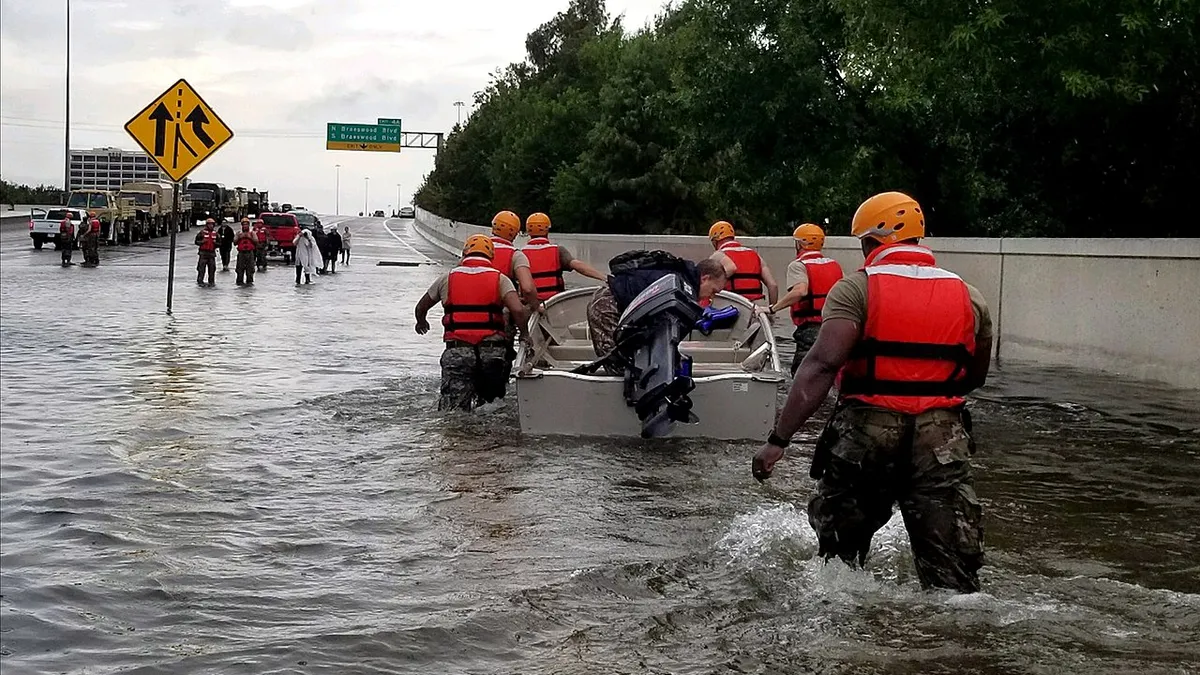Dive Brief:
- Houston's Department of Public Works has proposed that all new structures in the city be built two feet above 100-year and 500-year floodplains in order to avoid a repeat of the massive flooding that occurred during Hurricane Harvey last year, according to Engineering News-Record.
- The agency examined the fallout from Harvey and determined that the current regulations that require building to 1 foot above the 100-year floodplain were not sufficient. Because 33% of the damaged homes were in the 500-year floodplain, public works officials have recommended including those areas in the new proposal.
- The cost of building to these new standards is expected to range from $11,000 to $32,000 per structure. If the city approves the new flood elevation ordinance, it will go into effect Sept. 1.
Dive Insight:
Former Shell Oil executive Marvin Odum is heading up the post-Harvey recovery as chief recovery officer, according to the Houston Business Journal, and is pushing for the changes that the Dept. of Public Works has proposed. In fact, Odum is in favor of developing elevation standards for buildings outside of the floodplains, as that is where many damaged homes were located. He has also suggested forcing owners of grandfathered structures to meet certain current flood guidelines.
The vote on the Dept. of Public Works' new standards was to have already taken place, but the city council postponed it to April 4 so they have extra time to consider the changes and to allow more public comment. Some have pushed back against the new elevation guidelines for fear it will result in higher housing costs. According to Odum, the new ordinance would increase the cost of a 1,500-square-foot house by $8,000 to $10,000.
The Houston Chronicle reported last month that the city of Houston has had to postpone many capital improvement projects in order to pay for hurricane damage. So, work on libraries, fire stations and other public assets, including street and utility infrastructure projects, will have to wait approximately five years for funding. While the Federal Emergency Management Agency (FEMA) picks up 90% of the cost of post-disaster recovery, local governments must pay up front and then wait for FEMA reimbursement.
Hurricanes Harvey, Irma and Maria together caused losses of $215 billion, making 2017 the most expensive hurricane season on record. Munich RE said in January that international disaster losses last year totaled $330 billion, and only $135 billion of the costs were insured.











